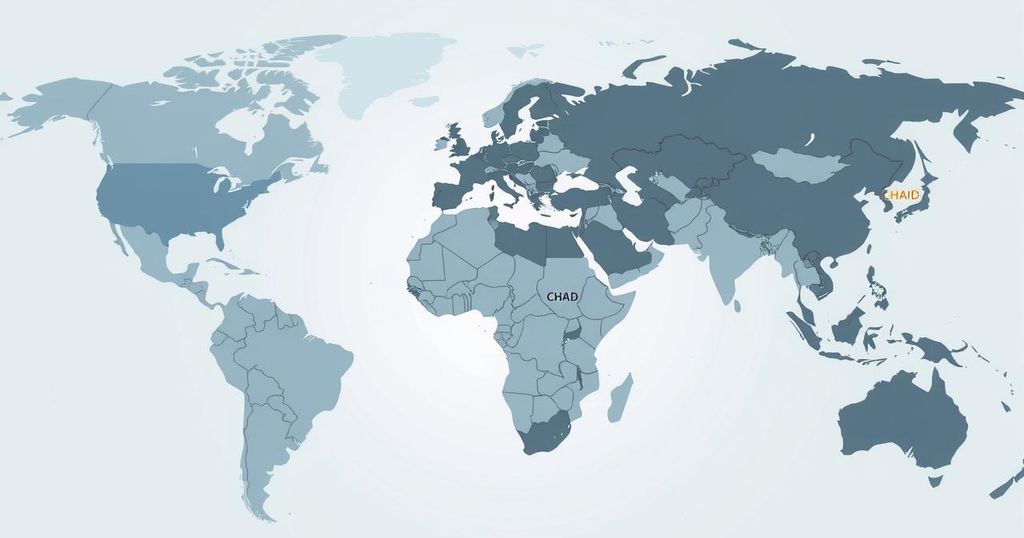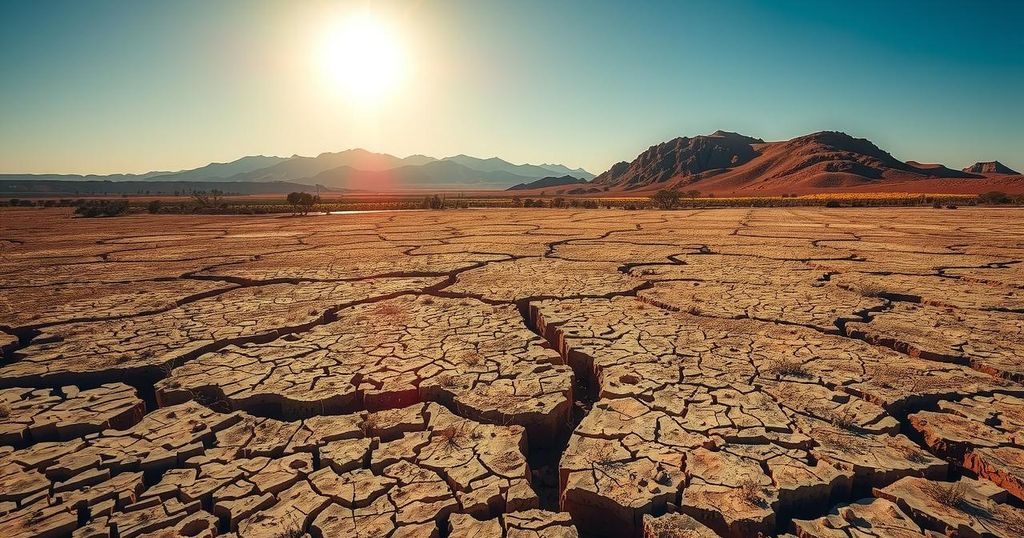Global Air Quality Report 2024: Pollution Challenges and Insights
The 2024 World Air Quality report identifies Chad and Bangladesh as the most polluted countries, with Delhi noted as the most polluted capital. Only seven countries meet WHO air quality guidelines. India has the highest number of polluted cities, although national pollution levels show improvement. The findings emphasize the urgency of international cooperation to address trans-boundary air pollution, particularly in South Asia.
According to the 2024 World Air Quality report by IQAir, Chad and Bangladesh emerged as the most polluted countries in the world, with Delhi, India, marking the highest pollution levels among capital cities. Alarmingly, only seven countries globally met the World Health Organization’s (WHO) air quality standards, while air pollution in Africa remains largely underreported. Additionally, the report reveals significant reductions in pollution levels across India but still shows the country ranking high in national pollution levels.
India has witnessed a moderate improvement, with 74 out of the 100 most polluted cities located within its borders, a reduction from 83 cities last year. Notably, PM2.5 levels dropped by 7% nationwide, averaging 50.6 micrograms per cubic meter, yet still exceed the WHO’s safe guideline by tenfold. Despite the high pollution figures, India ranks fifth globally after Chad, Bangladesh, Pakistan, and the Democratic Republic of Congo.
Globally, only 17% of approximately 9,000 cities surveyed met the WHO’s air pollution standard of 5 micrograms per cubic meter for PM2.5. Disturbingly, the report highlights the challenges faced by developing nations in monitoring air quality, especially after significant cuts to the US environmental protections impacted real-time data collection efforts worldwide.
The report illustrates the dire air pollution crisis affecting the Global South, particularly in Asia. The lack of adequate monitoring in many African countries poses additional challenges, with only 24 of 54 African nations reporting data this year—an increase from three in 2017. On a national level, the United States’ recent closure of air quality monitoring stations at various embassies threatens to diminish the availability of reliable air quality data in resource-limited countries, with significant implications for public health surveillance.
Notably, the discrepancies in pollution rankings can be attributed to India’s comprehensive air quality monitoring network, which spans urban and rural areas. In contrast, Pakistan and Bangladesh’s monitoring efforts largely reflect pollution levels in urban environments, thereby skewing their national averages. The report calls for regional cooperation to tackle trans-boundary pollution issues, emphasizing that air pollution crosses national borders and must be regarded as a collaborative concern among neighboring countries.
Delhi continues to be the most polluted capital globally, with air quality worsening, experiencing a 6% increase in PM2.5 levels to reach 108.3 micrograms per cubic meter. The findings attribute this rise to vehicular emissions, construction activities, and agricultural burning. Furthermore, all 74 polluted cities in India are concentrated in northern regions, where geographical factors exacerbate pollution issues, indicating the need for coordinated efforts across state lines to mitigate air quality challenges.
Regions in China have witnessed a reduction in pollution levels, particularly in major cities, while Southeast Asia, including Indonesia and Vietnam, confronts its air quality challenges amidst competing industrial demands. Indonesia remains the most polluted country in Southeast Asia, struggling with a clean energy transition, while Vietnam’s air pollution undercuts economic growth, leading to significant societal and health impacts. Campaigns to elevate public awareness and encourage sustainable practices are gaining traction in Vietnam to combat this crisis effectively.
Ultimately, the report underscores the critical need for international collaboration and proactive measures to address air pollution while highlighting the stark realities faced by heavily polluted regions such as South Asia, underscoring an urgent need for strategy and commitment among countries sharing common environmental challenges.
In conclusion, the 2024 World Air Quality report reveals alarming levels of air pollution in countries like Chad and Bangladesh, with India also ranking high due to its urban pollution challenges. While some nations have shown marginal improvements and only a few meet WHO air quality standards, the report emphasizes the significance of a coordinated regional approach to combat air pollution effectively, particularly in the Global South. With the detrimental effects of pollution on public health and economic stability, it is imperative that nations collaborate to share resources and implement sustainable practices to enhance air quality for future generations.
Original Source: healthpolicy-watch.news




Post Comment